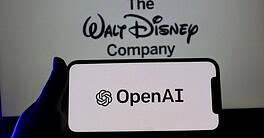New tools and techniques, including AI and ML, are helping treasurers to optimize cash flow—and giving them a bigger role in strategic business decision making.
Not that long ago, corporate treasurer—the top slot in every company’s green-eyeshade corps—was about the last position most observers would tag as strategic. While the job has always had a strong risk-management component, the basic task was simple: making sure the company has cash available, when and where it’s needed.
Not anymore. Today, the corporate treasury team plays a critical role helping companies navigate a business environment rife with economic uncertainty, geopolitical risks, regulatory change, trade tensions and supply chain disruptions. And while the latest tools of the trade—artificial intelligence (AI) and machine learning (ML)—promise to make tasks such as liquidity forecasting, cash management, and risk management easier, they come with their own complications and tie the treasury team even more closely into management’s strategic planning.
That means corporate treasurers are collaborating closely with other business units and leveraging data and analytics to supply critical insights into finance and risk issues and improve cash flow. Treasury must be able to react quickly to new scenarios while optimizing liquidity in both the short and long term to secure the company’s financial health.
“Things change on a daily basis, which is very different from three or four years ago,” says Herve Carrere, chief product officer, Treasury and Capital Markets, at Finastra. “You have the ongoing wars, conflict with China, high inflation, and [high] interest rates.”
Faced with these challenges, companies must be able to forecast better and produce more efficient and more regular analysis for scenario planning. “Treasurers need to optimize as much as possible and be more agile,” Carrere says. “They need efficient tools to manage cash flows, both cash in and cash out, and to predict the impact of something specific to their treasury needs.”
Cash flow forecasting is a top priority for treasurers, says Niki van Zanten, a former corporate treasurer and now a consultant at TreasurUp, a Netherlands-based fintech serving banks. “It’s an activity, but what is really important is the consequence of that activity,” he notes. “So that could either be that you’re doing cash flow forecasting to make sure, in the very short term, that you have enough liquidity to pay all your salaries and invoices and to make sure everything is clear. But it could also be that you want to make sure you have, for instance, a fixed deal forward—going half a year out from now.”
Data-Driven Forecasting
Liquidity forecasting, which incorporates more data sets to make cash flow forecasting more useful as a strategic tool, is one of the areas where AI and ML can help—but they also create potential problems of their own.
“Many software providers are starting with ML models that accelerate the calculation of select proven models,” says Victoria Blake, chief product officer at treasury and risk-management software provider GTreasury, based in the US. “These models can be helpful as a comparison point in scenario planning and help with decision-making as it relates to treasury applications like forecasting future liquidity requirements.”
AI, by contrast, “requires substantially larger swaths of data to begin providing reasonably predictive model outcomes for these treasury use cases,” Blake says. “Further, the burden of AI effectiveness relies entirely upon the engineering of the underlying model. Meaning, if the AI is a ‘black box’ in any form, it can be difficult to understand and act on the pattern factors that the AI predicts. So, it’s important for treasury teams to first have a deep understanding of these models before using them, to avoid potential false signals and predictors.”
Black box AI systems are not practical for the treasury function, van Zanten agrees.
“They need to see very clearly which data sources they have,” he says, “and they like to use data sources they already know. Doing forecasting, for most corporates, means doing it as well as possible with as little effort as possible, which means that banks must supply all the information they have ready at hand in the format that the corporate can use.”
That said, AI and ML systems answer corporate treasurers’ continuing need for better ways to extract meaning from the numbers.
“We’ve seen how migrating to the right treasury data analytics strategy can absolutely transform how treasury teams interpret and utilize their financial information—and deliver better business outcomes within the corporate suite,” notes Blake. “By tapping into advanced analytical tools, treasury teams can uncover far deeper insights from their increasingly vast volumes of financial data.”
Those insights can include identifying key trends, patterns, and anomalies that might otherwise go unnoticed, providing a clear picture of the company’s financial health.
“Real-time data processing allows for more agile responses to market changes and internal financial shifts,” says Blake. “Predictive analytics can forecast future financial scenarios with greater accuracy, contributing to risk management and strategic planning. Automation in this data analysis process also frees up treasury teams to focus on interpreting results and developing strategic recommendations.”
Financial institutions are busy creating client offerings that harness advanced data analytics. Mike Cummins, head of treasury solutions at Providence, RI-based Citizens Bank, says their focus is on giving clients connectivity options and solutions that help them with liquidity management and fraud prevention.
“Within the realm of treasury management, data analytics are important for a variety of reasons, most importantly strategic and informative business decisioning, cash flow forecasting, and analysis of DPO [days payable outstanding] and DSO [days sales outstanding],” Cummins notes. “Clients benefit by optimizing their working capital and minimizing expense.”
From API To SaaS
While large corporates with multiple banking partners have treasury management system (TMS) or a forecasting engine doing multiple cash flow forecasts, a midsize corporate with only one house bank and maybe a couple of others and small finance department, and lack the funds to set up their own full-blown TMS, so they get it from their main banking partner.
This is a gap that their main banking partner might be willing to fill. “It’s becoming a sweet spot for banks to supply this,” suggests van Zanten. “For mid-sized companies making between £30 million and £300 million per annum, there is a lot of upside to start doing proper cash flow forecasting and professionalize finance processes. These companies have multiple accounts, multiple currencies, perhaps multiple banks, and a lot of data sources but they don’t have the tools and knowledge most of the time to create comprehensive, consolidated forecasts.”

Migrating to the right treasury data analytics strategy can transform how treasury teams interpret and utilize their financial information.
Application programming interfaces (APIs) are transforming cash management for corporate treasurers by enabling real-time data exchange and automation. Finastra’s API Marketplace allows banks to offer both extendibility and interoperability to corporate clients by enabling collaboration among banks, fintechs, software vendors, and other market participants, Carrere says. FusionFabric.cloud, its collaborative SaaS (software as a service) platform, offers an à la carte menu of treasury services that banks can provide their corporate clients.
“APIs simplify the connectivity with the rest of the participants of the ecosystem depending on what you need, be it payment connectivity, reconciliation, collateral management, etc.,” Carrere says. “They also provide additional revenue for banks, which can offer value-added services to their end customers based on big data models that they can test, validate, and run without needing to engage in a costly project.”
Like APIs, which first emerged in the 1940s but are now ubiquitous, virtual accounts have been around for decades but are now evolving from simple digital sub-accounts to sophisticated financial tools that offer enhanced functionality, expanded use cases, improved security, and valuable insights. These innovations are empowering treasury teams to optimize cash management, reduce costs, and drive business growth.
“Corporates with a high number of physical bank accounts may face challenges around cash visibility and control. Valuable liquidity can often be residing in the wrong place at the wrong time,” says Tom Wood, head of Global Payments Solutions, Commercial Banking, at HSBC UK. “By assigning a unique virtual account number to each business unit and currency, our Virtual Account Management solution can help corporates rejuvenate their cash management. Virtual accounts also support natural cash concentration, reduce reliance on physical accounts and can accelerate the onboarding process of new entities.”
Boosting business growth in a tough economic climate is a challenge, but with tools like virtual accounts and APIs and new process models like SaaS, treasurers can access, aggregate, and analyze real-time data from treasury systems and other sources, providing instant cash visibility and valuable insights that enable them to make better-informed data-driven decisions.




